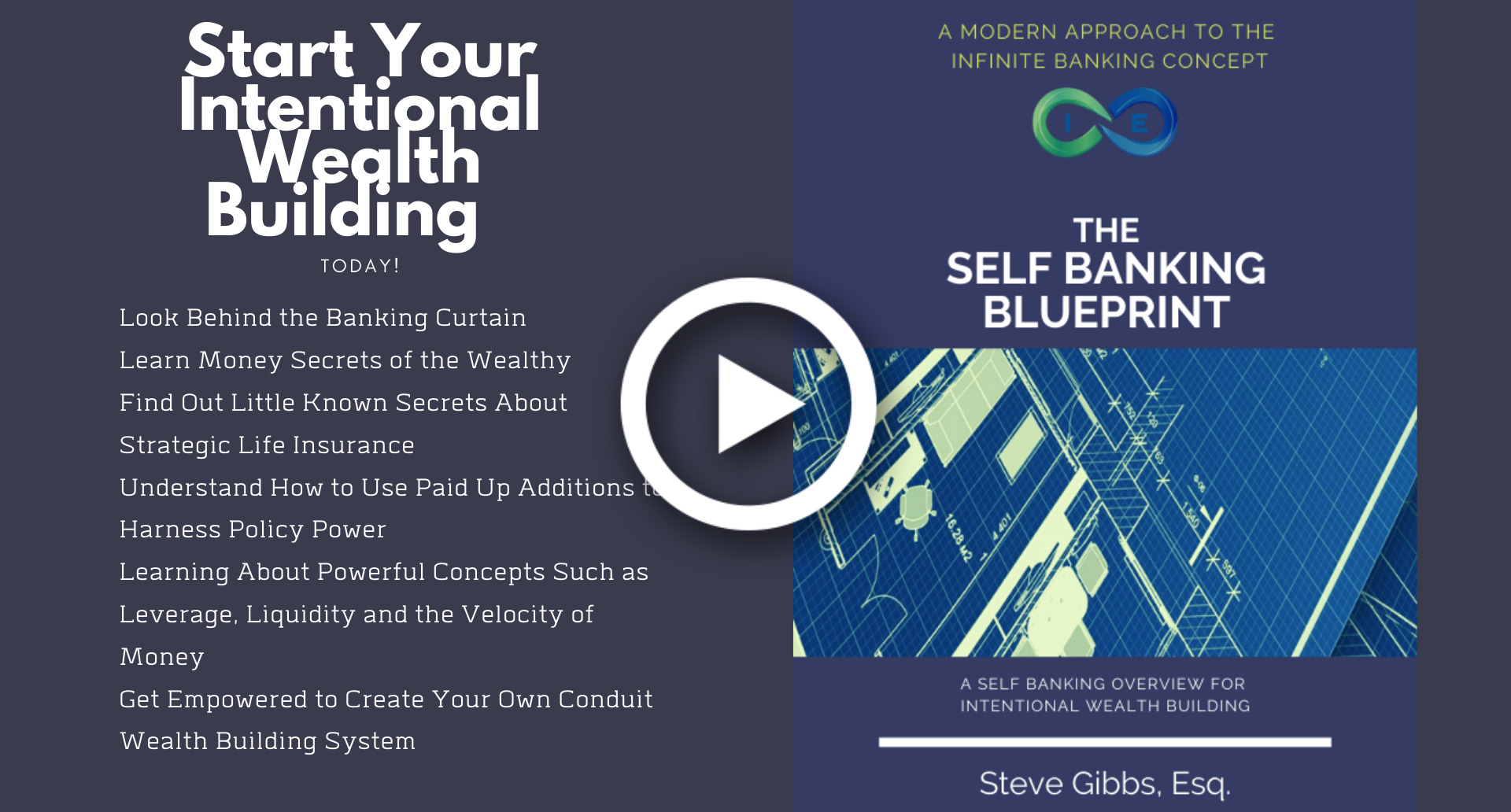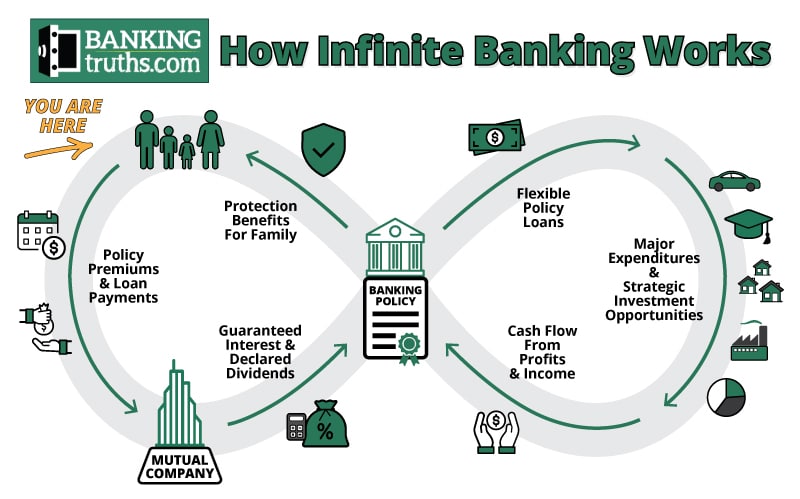All Categories
Featured
Table of Contents
Okay, to be reasonable you're really "financial with an insurance provider" rather than "financial on yourself", yet that principle is not as easy to market. Why the term "limitless" financial? The idea is to have your money working in multiple places simultaneously, as opposed to in a single place. It's a little bit like the concept of buying a house with money, then borrowing versus your home and putting the cash to function in another financial investment.
Some individuals like to speak regarding the "velocity of cash", which generally indicates the exact same thing. That does not indicate there is nothing beneficial to this concept once you obtain past the advertising and marketing.
The entire life insurance policy industry is pestered by excessively pricey insurance policy, huge compensations, shady sales techniques, low prices of return, and poorly enlightened clients and salesmen. If you want to "Financial institution on Yourself", you're going to have to wade right into this market and in fact acquire entire life insurance coverage. There is no substitute.
The assurances integral in this product are critical to its function. You can obtain against a lot of kinds of cash money worth life insurance policy, however you shouldn't "bank" with them. As you get a whole life insurance policy to "bank" with, keep in mind that this is a completely separate section of your economic strategy from the life insurance policy area.
As you will certainly see below, your "Infinite Financial" plan truly is not going to accurately offer this vital financial function. One more trouble with the reality that IB/BOY/LEAP relies, at its core, on a whole life plan is that it can make buying a plan bothersome for several of those interested in doing so.
Nash Infinite Banking
Dangerous leisure activities such as SCUBA diving, rock climbing, skydiving, or flying also do not mix well with life insurance policy items. The IB/BOY/LEAP advocates (salesmen?) have a workaround for youbuy the plan on a person else! That may function out great, because the point of the policy is not the survivor benefit, yet remember that acquiring a plan on small youngsters is extra costly than it needs to be since they are generally underwritten at a "conventional" rate instead than a preferred one.

A lot of plans are structured to do one of 2 points. Most typically, plans are structured to maximize the payment to the representative offering it. Cynical? Yes. Yet it's the reality. The commission on a whole life insurance plan is 50-110% of the first year's premium. Often plans are structured to make best use of the fatality benefit for the premiums paid.
The rate of return on the plan is very important. One of the ideal methods to maximize that element is to obtain as much cash money as possible into the plan.
The ideal means to boost the price of return of a plan is to have a fairly small "base policy", and after that placed even more cash right into it with "paid-up additions". With more cash money in the plan, there is more cash worth left after the prices of the death advantage are paid.
A fringe benefit of a paid-up addition over a normal costs is that the compensation rate is reduced (like 3-4% rather than 50-110%) on paid-up additions than the base policy. The less you pay in payment, the greater your rate of return. The price of return on your cash money worth is still mosting likely to be unfavorable for a while, like all cash money value insurance policy policies.
The majority of insurance policy companies just use "straight recognition" fundings. With a straight acknowledgment finance, if you obtain out $50K, the reward rate used to the cash money value each year only uses to the $150K left in the policy.
What Is A Cash Flow Banking System
With a non-direct acknowledgment car loan, the company still pays the same returns, whether you have actually "borrowed the money out" (technically versus) the policy or not. Crazy? Who recognizes?
The business do not have a source of magic cost-free cash, so what they provide in one place in the policy need to be extracted from an additional area. If it is taken from a function you care less around and place into an attribute you care more around, that is a good thing for you.
There is another crucial feature, generally called "wash lendings". While it is terrific to still have actually dividends paid on money you have actually taken out of the plan, you still have to pay rate of interest on that particular loan. If the dividend price is 4% and the funding is charging 8%, you're not precisely coming out in advance.
With a laundry funding, your lending passion price is the same as the reward rate on the plan. So while you are paying 5% interest on the loan, that interest is totally balanced out by the 5% dividend on the finance. So in that respect, it acts much like you took out the cash from a checking account.

5%-5% = 0%-0%. Without all three of these aspects, this policy just is not going to function extremely well for IB/BOY/LEAP. Virtually all of them stand to benefit from you purchasing right into this idea.
Actually, there are numerous insurance representatives discussing IB/BOY/LEAP as a feature of entire life who are not really offering policies with the needed functions to do it! The trouble is that those that know the principle best have a large conflict of interest and normally inflate the advantages of the idea (and the underlying plan).
Whole Life Insurance For Infinite Banking
You need to compare borrowing against your policy to withdrawing money from your cost savings account. No money in money value life insurance coverage. You can put the cash in the financial institution, you can invest it, or you can buy an IB/BOY/LEAP plan.
You pay taxes on the rate of interest each year. You can conserve some even more money and put it back in the financial account to start to make interest once again.
It grows throughout the years with funding gains, returns, rental fees, etc. A few of that revenue is exhausted as you go along. When it comes time to buy the boat, you market the investment and pay taxes on your long-term funding gains. You can conserve some even more money and buy some more financial investments.
The cash worth not used to spend for insurance and compensations expands over the years at the returns price without tax obligation drag. It begins out with negative returns, yet ideally by year 5 or two has actually damaged even and is growing at the reward price. When you most likely to purchase the watercraft, you obtain against the policy tax-free.
Is Infinite Banking A Scam
As you pay it back, the cash you paid back begins growing once again at the returns price. Those all work pretty similarly and you can compare the after-tax rates of return. The fourth option, however, works really in different ways. You do not conserve any kind of money nor acquire any kind of kind of investment for several years.
They run your credit history and offer you a funding. You pay rate of interest on the borrowed cash to the financial institution until the financing is repaid. When it is settled, you have a virtually useless boat and no money. As you can see, that is nothing like the very first 3 alternatives.
Latest Posts
How To Become My Own Bank
Infinite Financial
Infinite Banking With Iul: A Step-by-step Guide ...